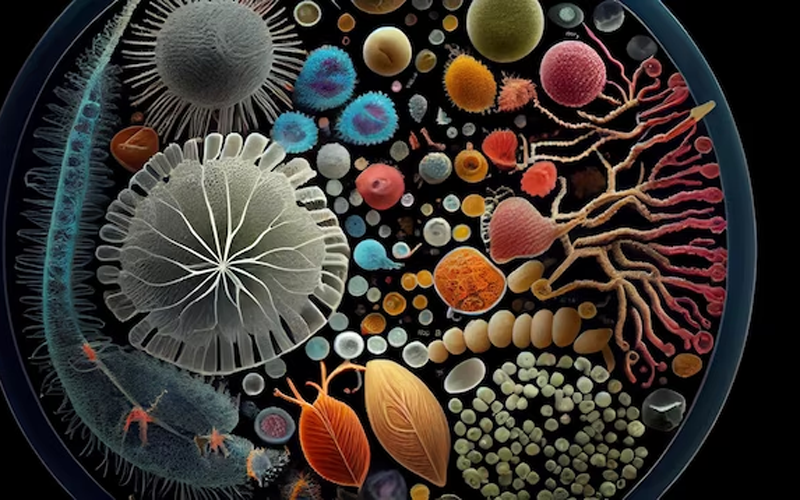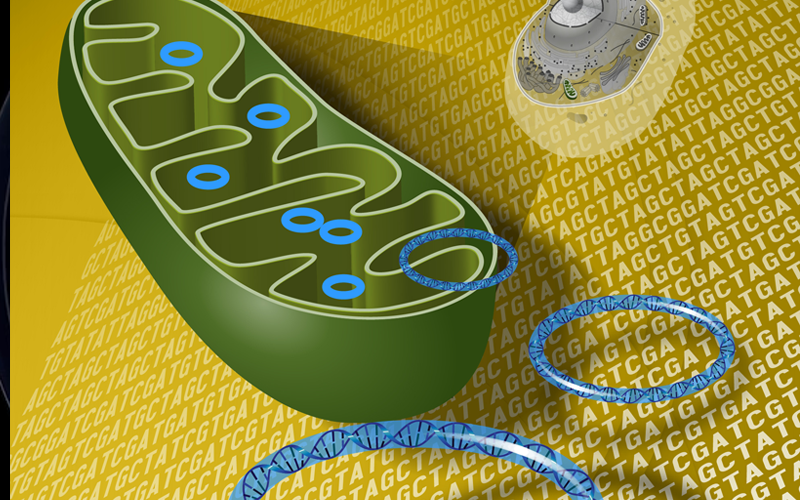In the vast universe of human anatomy and cellular structure, questions like "What are the examples of mitochondrial disorders?" fuel our quest for knowledge. Peering into the microscopic realms within us, we uncover tales of energy, life, and the occasional shadow that mitochondrial disorders cast on the cellular symphony. Join us as we unravel the intricate tapestry of these disorders, weaving through the threads of mitochondrial inheritance diseases and exploring the myriad ways they manifest, leaving an indelible imprint on the canvas of human health.

OPA Heart
The #1 CoQ10 for Heart Health
Mitochondrial Inheritance Diseases: A Cellular Conundrum

Embarking on a journey through the corridors of our cells, we encounter the enigmatic world of mitochondrial inheritance diseases. These disorders silently orchestrate a myriad of cellular functions, subtly influencing the harmonious rhythm of our biological symphony. From subtle whispers of fatigue to roaring crescendos of muscular weakness, the manifestations of these disorders are as diverse as the melodies of nature.
Diving deeper into the cellular universe, we find ourselves amidst the swirling dance of molecules and DNA. It’s here, in this vibrant ballet, where the secrets of mitochondrial inheritance diseases lie hidden, shrouded in layers of complexity. Each disorder is a unique composition, a melody crafted from the interplay of genetic variations and environmental symphonies, painting a vivid portrait of the multifaceted nature of these conditions.
What are the Examples of Mitochondrial Disorders?
Mitochondrial disorders encompass a variety of conditions caused by dysfunctional mitochondria, the energy-producing components of cells. Examples include Leber's Hereditary Optic Neuropathy (LHON), which affects vision; Mitochondrial Encephalomyopathy, Lactic Acidosis, and Stroke-like episodes (MELAS), impacting the brain and muscles; Myoclonic Epilepsy with Ragged Red Fibers (MERRF), characterized by muscle twitching and weakness; Kearns-Sayre Syndrome, a condition that leads to eye and heart problems; and Mitochondrial DNA Depletion Syndrome, which can cause muscle weakness and liver failure. These disorders vary greatly in symptoms and severity, reflecting the diverse roles of mitochondria in different tissues.
The Underlying Mechanism
Venturing into the heart of the cell, we discover the mitochondria, the revered powerhouses that fuel our existence. These microscopic dynamos are the maestros of our cellular orchestra, conducting the harmonious flow of energy essential for life. However, when discord infiltrates this symphony, the melody of life falters, unveiling a cascade of complications and revealing the delicate balance upon which our existence teeters.
In the shadow of mitochondrial malfunction, a spectrum of disorders emerges, each narrating a tale of disruption, adaptation, and survival. The dance of life becomes a delicate ballet, a balance between the resilience of the human spirit and the challenges posed by the unseen cellular marionettes. It’s a narrative of triumph and tribulation, a testament to the intricate and indomitable nature of life.
Deciphering the Diversity: What is Mitochondrial Inheritance Examples?

In the pursuit of understanding, "What is mitochondrial inheritance examples?", we find ourselves navigating through a maze of genetic enigmas and cellular mysteries. This exploration unveils a spectrum of disorders, each with its own unique signature, echoing the diversity of life itself. The manifestations of these disorders are as varied as the hues of a sunset, painting a canvas of symptoms that range from the subtlety of a gentle breeze to the ferocity of a tempest.
Amidst this diversity, we encounter tales of endurance and adaptability. Each individual diagnosed with a mitochondrial disorder embarks on a unique journey, navigating through the uncharted waters of uncertainty and challenge. It’s a voyage marked by the search for answers, the pursuit of relief, and the undying hope for a better tomorrow.
Commonest Culprit: Mitochondrial Myopathy
In the realm of mitochondrial mysteries, mitochondrial myopathy takes the spotlight as the commonest mitochondrial disease. This disorder epitomizes the paradox of strength and vulnerability, casting shadows on the vibrant landscape of cellular function. Here, the symphony of life faces the challenges of discord and dissonance, as the source of energy becomes a harbinger of weakness and debilitation.
Yet, amidst the shadows, glimmers of hope sparkle. Individuals living with mitochondrial myopathy showcase the strength of the human spirit, defying the odds and embracing life with courage and determination. Their stories are a testament to the resilience of humanity, an inspiring melody of perseverance and hope in the face of adversity.
Mitochondrial Disorders: More Than Meets the Eye

Mitochondrial disorders are intricate puzzles, each piece concealing a secret waiting to be uncovered. The journey to solving these enigmas is a voyage through unknown territories, where every discovery reveals new facets and raises more questions than answers. In this ever-evolving landscape, the echoes of cellular anomalies resonate, narrating tales of resilience, adaptation, and the relentless pursuit of understanding.
Living with a mitochondrial disorder is an expedition through uncharted territories. Every day presents a new challenge, a battle against the unseen forces that cast shadows on the path of normalcy. Yet, amidst the uncertainty, stories of hope and triumph emerge. Individuals living with these disorders showcase the strength of the human spirit, illuminating the path with their resilience and determination.
Living with a Mitochondrial Disorder
Living with a mitochondrial disorder is like navigating through a sea of unknowns, where every wave brings a new challenge and every dawn holds the promise of hope. The journey is marked by a spectrum of experiences, from the trials of daily life to the triumphs of overcoming obstacles. It’s a narrative of resilience, a story of individuals facing the unknown with courage and determination.
Amidst the challenges, moments of joy and fulfillment shine through. The human spirit, indomitable and resilient, rises above the shadows, illuminating the path with hope and inspiration. Every individual living with a mitochondrial disorder holds a unique story, a testament to the strength and adaptability of humanity in the face of adversity.
Summary
As we reach the end of our exploration, we find that the question, “What are the examples of mitochondrial disorders?” has opened doors to a world of complexity and diversity. The journey has been a voyage through the intricate landscape of mitochondrial inheritance diseases, unveiling the myriad ways they manifest and the profound impact they have on the tapestry of human life.
The stories of those living with these disorders are a reflection of the strength and resilience of the human spirit. They are tales of hope and determination, narrating the experiences of individuals navigating through the uncharted waters of uncertainty and challenge. As we continue our quest for understanding and knowledge, we remain inspired by the indomitable spirit of those living with mitochondrial disorders, shining a light on the path of discovery and hope.
Frequently Asked Questions
Mitochondrial disorders originate from mutations in the mitochondrial DNA or the nuclear DNA that influence mitochondrial functions. These mutations can be inherited or can spontaneously occur, crafting a spectrum of disorders each with its unique set of symptoms and severity.
While there is no magic bullet or cure-all for mitochondrial diseases, the medical field has made strides in managing symptoms and enhancing the quality of life for those affected. Tailored therapies and individualized treatment plans focus on alleviating symptoms, slowing the progression of the disease, and fostering overall well-being.
While considered a rarity in the medical world, with an estimated prevalence of 1 in 5,000 individuals, the actual number of cases might be higher. The diverse manifestation and symptomatic overlap with other conditions make them a diagnostic challenge, potentially leading to underdiagnoses.
The diagnosis of mitochondrial disorders is a meticulous process involving a combination of clinical evaluations, laboratory tests, genetic analyses, and imaging studies. The diverse and overlapping symptoms make it a challenging puzzle, but advancements in genetic testing have improved the accuracy of diagnoses.
The prognosis for those with mitochondrial disorders is as varied as the disorders themselves. While some individuals may lead relatively normal lives with proper symptom management, others may experience a progressive decline in health and a reduced life expectancy. Early diagnosis and individually tailored treatment strategies are crucial in optimizing outcomes and improving the quality of life for those affected.



